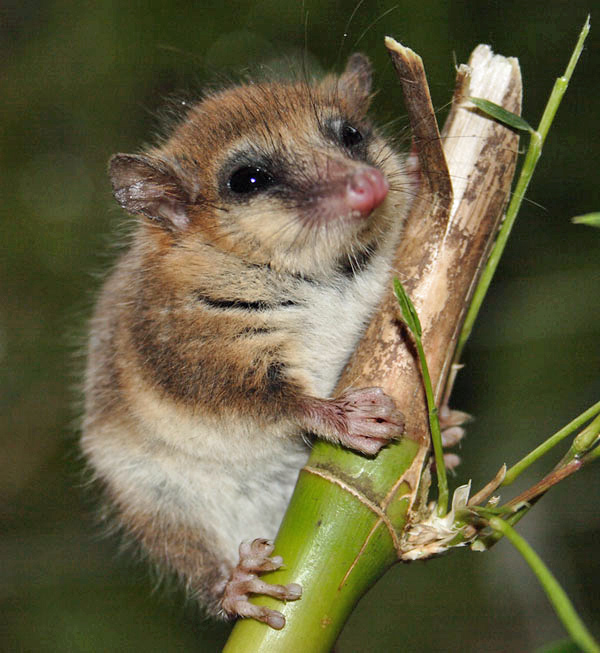Facts About Mouse Opossum, Monito Del Monte
The monito del monte, or Dromiciops gliroides, is a diminutive marsupial native to southwestern South America. It is the sole extant species in the ancient order Microbiotheria and the only representative of the superorder Australidelphia in the New World. These nocturnal, arboreal animals inhabit the Valdivian temperate rainforests of the southern Andes, where they feed on insects, small invertebrates, and fruit.
First described in 1894, Dromiciops gliroides is unique in its order. It has two subspecies, D. g. australis and D. g. gliroides, which were identified by zoologist Wilfred Hudson Osgood in 1943. Research suggests that South American marsupials, such as the monito del monte, may share a common ancestry with Australian marsupials due to ancient continental connections.
Monitos del monte construct cozy nests in trees using water-resistant leaves, moss, and grass to stay warm and dry. They possess short fur, distinctive black rings around their eyes, and prehensile tails that facilitate climbing and fat storage for hibernation. These marsupials are monogamous and have pouches with four teats to nurture their young.
Arboreal and nocturnal, monitos del monte are active at night and enter a state of torpor during extreme conditions. Their diet mainly consists of insects and fruit, and they play a crucial role in seed dispersion, particularly for the loranthaceous mistletoe plant. Unfortunately, they are listed as 'near threatened' due to their declining population, which also impacts dependent species such as the tick Ixodes neuquenensis and the plant Tristerix corymbosus.
Conservation efforts for the monito del monte are limited but ongoing, with studies conducted in protected areas like the Los Ruiles National Reserve and the Valdivian Coastal Reserve in Chile. These initiatives are vital to safeguarding this unique species and maintaining the delicate balance of its ecosystem.

 Peru
Peru